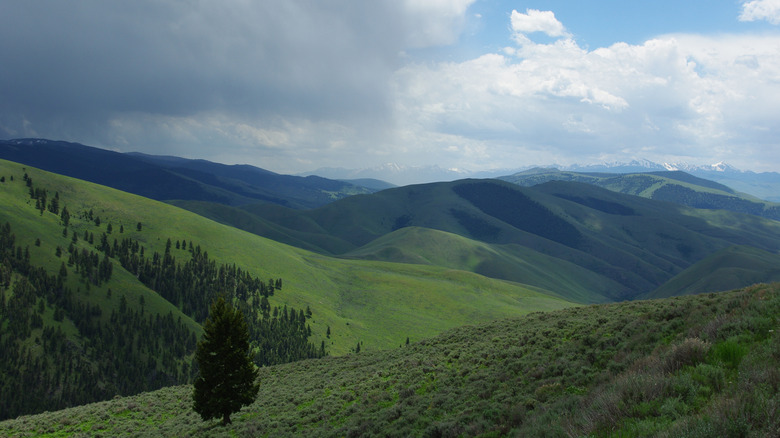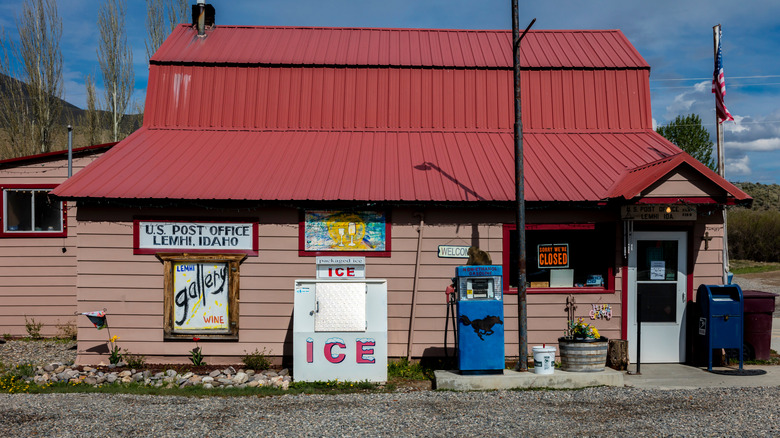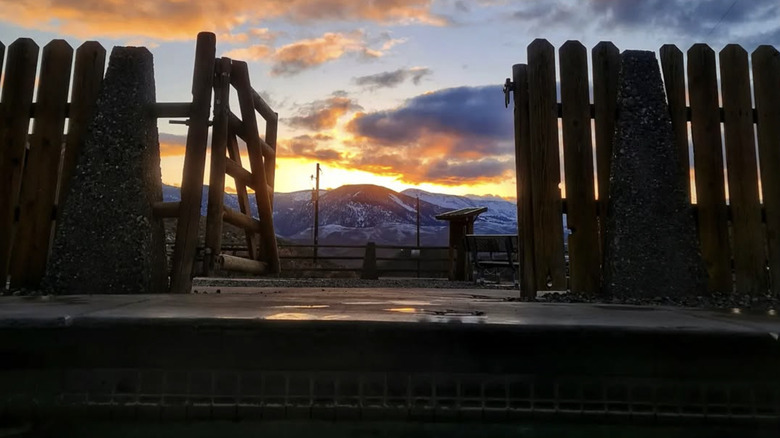Idaho's Backcountry Byway Is A Spectacular Wilderness Road Trip Untouched By Time
A unique backcountry byway in the remote Idaho mountains offers adventure seekers a rare opportunity to absorb some stunning mountain views while taking in an important slice of American history. Atop Lemhi Pass on the Idaho-Montana border, visitors with a dependable, high-clearance vehicle can stand where the Lewis and Clark Corps of Discovery first crossed the Continental Divide some 220 years ago on the expedition's push to the Pacific Ocean. It was the first official attempt to explore the vast Louisiana Purchase negotiated between France and the United States in 1803.
The Lewis and Clark Backcountry Byway both starts and ends near the little community of Tendoy, just north of Lemhi, Idaho and near the Gem State's border with Montana. It is both a beautiful drive into the Beaverhead Mountains and a testament to America's push to expand its territory "from sea to shining sea." The party, guided by Sacagawea, a member of the indigenous Shoshone tribe, reached the summit of Lemhi Pass in August 1805, more than a year after leaving St. Louis, Missouri, on its journey west. Upon reaching the summit, party leaders Merriweather Lewis and William Clark hoped they would gaze from the top of the pass down into the Columbia River and, in the distance, see the Pacific Ocean. Little did they know that the expedition was still more than 850 miles from the sea.
Not much has changed in Lemhi, Idaho in more than 200 years
Today, the Lewis and Clark Backcountry Byway is a navigable gravel road that, with a proper vehicle, can be traversed over the course of a day. The byway leads into the backcountry, and other than the loop roads to the top of Lemhi Pass and back, it looks a lot like it did when the Corps of Discovery got its first look at the rugged central Idaho mountains more than two centuries ago. Starting just north of the small community of Tendoy, north of Lemhi, motorists can follow the Lewis and Clark Highway northeast. The gravel road slices through public lands managed by the U.S. Bureau of Land Management. It takes visitors through the mountains and eventually meets up with Agency Creek Road. From there, it's a short drive to the top of Lemhi Pass.
At the top, tourists are not only blessed with the stunning views of the Bitterroot and Lost River mountain ranges, but they can also read the interpretive signs that describe the Corps of Discovery's initial crossing of the Continental Divide. For modern-day "explorers," the Lewis and Clark Backcountry Byway continues back to the east and down the Continental Divide via the Lewis and Clark Highway, which isn't really a highway at all, but a two-track gravel road that follows Agency Creek down the mountains and back to Tendoy. Like other Idaho adventures with yesteryear charm, this is a rural adventure that leads visitors through the state's remote mountains.
The Lewis and Clark Backcountry Byway is more than just a drive into the mountains
Like most Idaho adventures that require leaving the pavement and ascending into the wild, the Lewis and Clark Backcountry Byway offers visitors more to do than just gazing at the scenery. The northern portion of the loop should include a stop at Sharkey Hot Springs, a lightly developed pair of hot springs pools where visitors can soak before heading up to Lemhi Pass or back to Tendoy after a day in the mountains. Unlike many hot springs found in Idaho, Sharkey Hot Springs is easily reached, and includes heated changing rooms, a vault toilet and even a fire pit.
On the southern side of the loop, the byway follows Agency Creek, which, at the time of Lewis and Clark, was a legitimate salmon spawning stream for Chinook salmon that would migrate nearly 900 miles up the Columbia, Snake and Salmon rivers every year. Today, thanks to dams along their migration route, salmon don't often make it this far, and the creek is a trout stream. Anglers can cast for brook trout and cutthroat trout in its cold, clear waters.
But, of course, the real reason to visit the byway is to get a taste of some American history, both colonial and Indigenous. Lewis and Clark are often credited with "discovering" the Lemhi Pass route over the Rockies, but the Shoshone and Nez Perce tribes used the route for thousands of years, both for transportation and trade. The byway pays homage to these first Americans.


